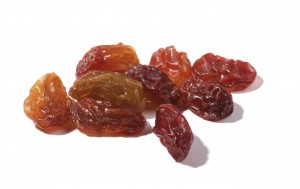TOPIC: Halloween Dangers! - Click to read more...
Over the past three decades, pet ownership in the U.S. has jumped significantly. As of 2024, 66% of U.S. households (86.9 million homes) own a pet. That's up from 56% in 1988, pet ownership statistics show. From companionship to emotional support, our pets are a vital part of their owner's lives.
That all being said, Halloween is right around the corner. So what does this all mean? Lots of yummy treats and toys that will find their way into the homes and counter tops of more than half of the U.S.
Here we will discuss the list of the most prevalent toxic substances that are popularly given out during Halloween. We will discuss what you need to look out for and who to contact in an emergency.
The most common Halloween hazards for pets are:- Chocolate
- Candy overindulgence
- Raisins
- Candy wrappers
- Glow sticks/Jewelry
- Candles
Chocolate
One of the most commonly known hazards. Out of all candies, chocolate poses the biggest Halloween “threat” to dogs. Many dogs are attracted to the smell of chocolate, making it a significant threat for massive ingestion. The darker and more bitter the chocolate, the more poisonous it is. Methylxanthines are the chemicals in chocolate that are dangerous to pets, and they are more concentrated in darker chocolates. A single ounce of Baker’s chocolate can make a 50-pound dog very sick. Milk chocolate and white chocolate are less dangerous, but should still be kept out of the reach of pets. If you think your dog may have ingested chocolate, signs to watch for include vomiting, diarrhea, lethargy, agitation, increased thirst, an elevated heart rate, and in severe cases, seizures.
Over the past three decades, pet ownership in the U.S. has jumped significantly. As of 2024, 66% of U.S. households (86.9 million homes) own a pet. That's up from 56% in 1988, pet ownership statistics show. From companionship to emotional support, our pets are a vital part of their owner's lives.
That all being said, Halloween is right around the corner. So what does this all mean? Lots of yummy treats and toys that will find their way into the homes and counter tops of more than half of the U.S.
Here we will discuss the list of the most prevalent toxic substances that are popularly given out during Halloween. We will discuss what you need to look out for and who to contact in an emergency.
The most common Halloween hazards for pets are:
- Chocolate
- Candy overindulgence
- Raisins
- Candy wrappers
- Glow sticks/Jewelry
- Candles
Chocolate
One of the most commonly known hazards. Out of all candies, chocolate poses the biggest Halloween “threat” to dogs. Many dogs are attracted to the smell of chocolate, making it a significant threat for massive ingestion. The darker and more bitter the chocolate, the more poisonous it is. Methylxanthines are the chemicals in chocolate that are dangerous to pets, and they are more concentrated in darker chocolates. A single ounce of Baker’s chocolate can make a 50-pound dog very sick. Milk chocolate and white chocolate are less dangerous, but should still be kept out of the reach of pets. If you think your dog may have ingested chocolate, signs to watch for include vomiting, diarrhea, lethargy, agitation, increased thirst, an elevated heart rate, and in severe cases, seizures.
Candy and sweets overindulgence
Candy and other sweet foods – especially those containing poisonous xylitol – can also be poisonous to pets. (Important note: this can also be found in peanut butter - so please review ingredients before giving to your pet) Large ingestions of sugary, high-fat candy and sweets can lead to pancreatitis in pets. Potentially fatal, pancreatitis is inflammation of the pancreas and very painful. Pet owners should be aware that clinical signs of pancreatitis may not present for several days after ingestion. Signs include a decreased appetite, vomiting, diarrhea, lethargy, abdominal pain, and potentially, kidney or organ damage.
Candy and other sweet foods – especially those containing poisonous xylitol – can also be poisonous to pets. (Important note: this can also be found in peanut butter - so please review ingredients before giving to your pet) Large ingestions of sugary, high-fat candy and sweets can lead to pancreatitis in pets. Potentially fatal, pancreatitis is inflammation of the pancreas and very painful. Pet owners should be aware that clinical signs of pancreatitis may not present for several days after ingestion. Signs include a decreased appetite, vomiting, diarrhea, lethargy, abdominal pain, and potentially, kidney or organ damage.
Raisins
Mini-boxes of raisins can be a healthy treat for trick-or-treaters, but they are extremely poisonous to dogs! Raisins are so dangerous that they deserve the same pet-proofing treatment as chocolate – stored in secure containers far from their reach. Dogs can experience kidney failure after ingesting very small amounts of raisins (including similar products with grapes and currants too). For this reason, any ingestion should be treated as a potential poisoning. Signs of raisin or grape poisoning include vomiting, nausea, decreased appetite, lethargy, abdominal pain, excessive or decreased thirst and urination, bad breath, and rapid onset kidney failure.
Mini-boxes of raisins can be a healthy treat for trick-or-treaters, but they are extremely poisonous to dogs! Raisins are so dangerous that they deserve the same pet-proofing treatment as chocolate – stored in secure containers far from their reach. Dogs can experience kidney failure after ingesting very small amounts of raisins (including similar products with grapes and currants too). For this reason, any ingestion should be treated as a potential poisoning. Signs of raisin or grape poisoning include vomiting, nausea, decreased appetite, lethargy, abdominal pain, excessive or decreased thirst and urination, bad breath, and rapid onset kidney failure.
Candy wrappers
When pets get into candy, they can eat the wrappers too. Ingestion of foil and cellophane wrappers can sometimes cause a life-threatening bowel obstruction, which may require surgery to correct. Watch for vomiting, decreased appetite, not defecating, straining to defecate, or lethargy. X-rays or even ultrasound may be necessary to diagnose this problem.
Glow sticks and glow jewelry
Due to their curious nature, cats often accidentally ingest glow sticks and jewelry because they are bright and fun to chew. While not usually life-threatening, the contents can cause mouth pain and irritation, as well as profuse drooling and foaming. If your cat chews on glow jewelry, offer a tasty snack to help remove the product from the mouth. Bathing the chemical off the fur is important too, as grooming can contribute to further poisoning.
Costumes
If you put a costume on your pet, make sure it doesn’t impair his/her vision, movement or air intake. If it has metallic beads, snaps or other small pieces, be aware that these pieces, especially those that contain zinc and lead, can result in serious poisoning if ingested. Also, before thinking about dying or coloring your pet’s fur, consult with your veterinarian, as some products can be very harmful to pets, even if it’s labeled non-toxic to humans.
Candles
Curious noses and wagging tails have a way of finding lit candles. Keep candles out of your pet’s reach to prevent accidental thermal injury or burns.
Keep candy buckets off of floors and make sure they are in closed containers when stored.
If you think that your pet may have ingested something that they shouldn't have, please keep these numbers on hand. Your first action should always be to call your Veterinarian, however if they are not open or unavailable - an extremely valuable resource that is available. (Fee's may apply)
Emergency Hotline Resources - 24 hours, 7 days a week1. Pet Poison Hotline: (800) 213-6680 Pet Poison Helpline
2. ASPCA Animal Poison Control Center: (888) 426-4435
Curious noses and wagging tails have a way of finding lit candles. Keep candles out of your pet’s reach to prevent accidental thermal injury or burns.
Keep candy buckets off of floors and make sure they are in closed containers when stored.
If you think that your pet may have ingested something that they shouldn't have, please keep these numbers on hand. Your first action should always be to call your Veterinarian, however if they are not open or unavailable - an extremely valuable resource that is available. (Fee's may apply)
Keep candy buckets off of floors and make sure they are in closed containers when stored.
If you think that your pet may have ingested something that they shouldn't have, please keep these numbers on hand. Your first action should always be to call your Veterinarian, however if they are not open or unavailable - an extremely valuable resource that is available. (Fee's may apply)
Emergency Hotline Resources - 24 hours, 7 days a week
1. Pet Poison Hotline: (800) 213-6680
Pet Poison Helpline
2. ASPCA Animal Poison Control Center: (888) 426-4435
.png)








Comments
Post a Comment
Questions?